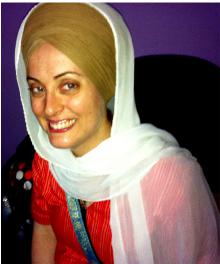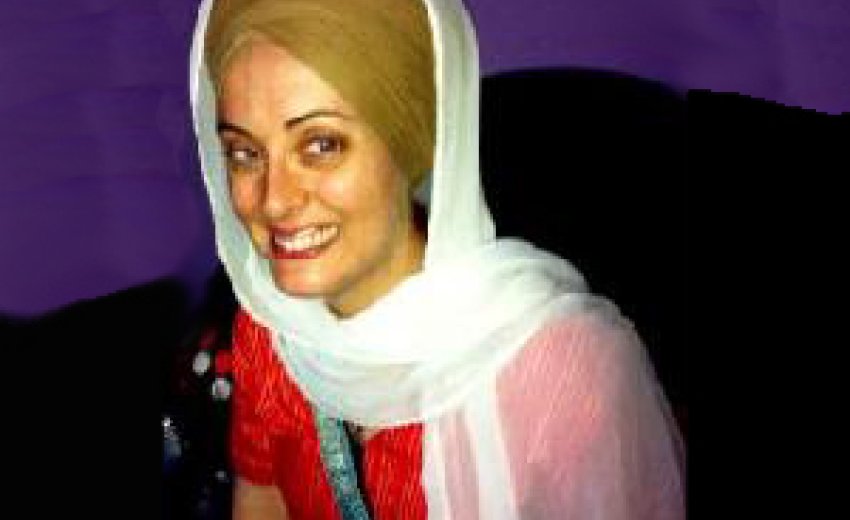 Wahe Guru ji Ka Khalsa, Wahe Guru Ji Ki Fateh!
Wahe Guru ji Ka Khalsa, Wahe Guru Ji Ki Fateh!
It was an intense hot-humid day on Wednesday, September 21, 2011. It would be the last available day on my visit to Amritsar to take Amrit. Initially the plan was to go to Anandpur Sahib and take it there, but Guru ji had something else in mind. There was something about the gathering presence of all the ten Gurus and the Sri Guru Granth Sahib at the Harimander Sahib that made me intuitively realize that my itinerary was no longer mine. My life was no longer mine. It belonged solely to Wahe Guru ji and adhere to the Khalsa panth. So the first step in that direction was seeing myself, along with 150 others, small babies included, being herded into the Gurdwara atop the Akal Takhat to receive Amrit. (not the babies of course, the mothers.)
It was the longest three hours of my life. The entire ceremony was in Punjabi and what I had picked up at Punjabi school went out the window, my brain just froze. Only by Guru Ji’s grace did I hold my ground that day and not run in the opposite direction succumbing to physical or mental fatigue, or defeat.
There were two key points for me. The first was when the Amrit nectar was being prepared. I have no recollection of how long it took the Panj Pyare to recite all the banis, but we had to remain standing, at attention, with hands folded in prayer. It could have been 45 minutes, an hour, who knows. All I knew at that point was that we were like soldiers standing at attention during a drill. It didn’t matter if we were uncomfortable, thirsty, hungry, sick or tired or if we had to go to the restroom. It wasn’t about us anymore, it wasn’t about me anymore, it was all about Wahe Guru Ji. I remember calling out to Guru Gobind Singh Ji, quite annoyed, feeling fatigued and about to pass out, saying, ‘Guru Ji, you brought me here, you see me through this!’
I remember that more than a dozen women remained standing. And across from us the men were still on their feet, not even giving a hint to wanting to take a break and sneakily sit down without the Sevadar noticing. This was when I understood that my roles would be as a Sikh, a Kaur then a Woman, in that order. How my actions and way of delivering the roles would affect the continuity of Khalsa, not only from a spiritual standpoint, but from a human standpoint as well.
So women want equal rights? In Sikhi equal rights is a given, five hundred plus years before Gloria Steinem and the feminists of the 60s ever marched the streets in protest and burned their bras to prove their point. With this equal role, it means equally taking the good with the bad, and taking with the brunt of standing out in a crowd. The agonizing process of accepting my femininity not by society’s standards as I was always taught to do, being brought up in Latin America: sporting hairless legs and underarms and parts that I will not mention, having a Botox friendly face or feeling bad if my chest was not up to par with the Siliconed triple D girl next to me, in a nutshell wearing my sexuality on my sleeve because that was understood to be girl power, but all it did was throw me as well as many other women into a vicious cycle of self-hate, confusion and poor decisions in all areas of life - often humiliating and life threatening decisions as well.
But instead I accepted my femininity in the most loving and healing way, by Wahe Guru Ji’s standards, which are to stop trying to find every excuse in the book as to why as an Amritdhari Sikh woman I didn’t have to wear a dastar like my brothers, like my husband, and like my father Guru Gobind Singh ji. As well as to understand that tweezing this facial hair or that wild one over there would no longer be part of my lifestyle. Hair is hair and to continuously argue about it, even within myself, was becoming fruitless. And my physical body was mine alone, to keep and respect and take good care of because it was the carrier of my mind and my heart, that which cocoons my soul. Besides, there were now more important things to focus on in life than altering the uniform.
And for future consideration, as a Kaur married to a full kesh and beard, turban-wearing Punjabi Singh, how could I support him in days when his beard or turban may create an issue in some other person’s life; someone who was ignorant regarding its true purpose, if I had no idea what that felt like in person?
How would I make sure his Sikhi is always strong, even though he held his own alone very well for all his life before we met. How would I have the audacity to teach my future son and daughter the value of Sikhi in its entire context; from the heart, as well as the outer form, if I myself didn’t experience it first hand and understand it with all six senses? Moreover, nothing is more annoying and disheartening to a child than hearing an adult they fully trust, turn into the biggest walking contradiction by ordering them to ‘Do as I say, not as I do.’
So a dastar is part of it, full body kesh is part of it, whether I like it or not. If I am to call myself a Sikh, especially after having taken Amrit, my gender has no say in the matter; there are absolutely no perks because I was born with a uterus. As a Singh is called to do so, this means that I stand out in a crowd on a daily basis and that’s despite positive, negative and confused reactions from friends and strangers, even if I am the only Sikh in the neighborhood, at my job, in the country, in my original immediate blood family. Besides, why do boys get the brunt of the responsibility and not the girls? Is it because they are more important and capable than us? No, we are all equal in Sikhi, are we not?
The second key point was… well let me fast-forward to the last 30 minutes of the ceremony. I was one of the last ones in line to receive the Amrit. It was indescribable. Being a sugar freak, the sweetness had something about it, it was no longer sugar and water, it had transformed, evolved. I didn’t even flinch when it was sprinkled five times in my eyes, and it was like healing oils when it was sprinkled over my lowered head. Upon standing again to greet the Sangat after having bowed to Guru Ji, as I turned to greet and take my place with the Kaurs who had already been blessed before me, all I could see was a row of smiling older bibis grinning from ear to ear. Then, as we drank the nectar again for that last time together as the Khalsa Panth, it was done. The pact was sealed. We had given our heads.
Did I change? Yes, inside and out.
Is it intense? Yes, in many ways.
What do I say to anyone considering receiving Amrit?
Do it, Guru Ji will guide you and support you, quite literally.
And to those who say it is not necessary to do this in order to be a Sikh? Don’t knock it ‘til you try it. It has an unlimited lifetime warranty of no negative side effects.
Furthermore, one last observation, upon hearing that I had just received Amrit, I heard many sound and wise words of advice from both Amritdhari and non-Amritdhari Sikhs. I listened and mentally took in what made sense, and discarded what didn’t. All in all, during the Amrit Sanchar, Guru Ji had been clear on exactly how I was to live my life from there on out until my last breath. I am not a better Sikh than the one who is not Amritdhari. I just personally chose to become Amritdhari because it would be the only way I would be able to understand Sikhi in its entirety. I didn’t want to pick and choose as if Sikhi were a fruit bowl. I wanted to give it the utmost respect it deserved, especially as an outsider coming in. And so I accepted the entire package. I have no regrets.
But one thing I do say, in the times we live in — and we all know deep down that these times are different than our parents’ times, or even our grandparents’ lifetimes — Sikhi plays a very specific and important role for the world. As Amritdhari I don’t have the right to scold or rebuke that Sikh who chooses not to take Amrit nor that Sikh who cuts his hair or shaves her legs. If I did, then I will have lost my entire understanding of bowing and having taken Amrit.
There is no room for ego now. Not even if I am genuinely zealous about sharing my enlightened experiences with other Sikhs. I must always remember the teachings of every single Sikh Guru that dedicated and sacrificed his life to establish Sikhi. In order to keep my bana I must keep working on the core, the heart; keep my head bowed low, serve everyone and let the other, even if he or she is not Amritdhari have the humbling and divine experience of serving me so I can learn how to receive from him or her with an open heart because Wahe Guru Ji is everywhere and in everyone. Langar is not only in eating, but also in every action we take that involves another. Ultimately, it is my actions that speak loud and clear amongst the crowded sea of Sikhs and non-Sikhs alike.
Wahe Guru Ji Ka Khalsa, Wahe Guru Ji Ki Fateh!
[Originally published on Oct. 24, 2011]
